Designing with Houseplants: 6 Top Tips for Styling a Living Room
Living rooms are the place to unwind after a long day and the main gathering space to assemble friends and family. Choosing the right decor can make or break the mood you want to create in your home. Regardless of your style, be it a minimalist approach where less is more, or a bohemian approach, where natural textures and colours are a crucial part of creating the space you desire.
It is important to choose rugs, furniture, and fittings for your living room based on both functionality and aesthetics while adding a potted plant to your home can add a touch of brightness and personality. Houseplants also have the ability to add a touch of glamour to a room while creating a feel-good atmosphere that is both functional and uplifting.
We've put together our 6 Top Styling Tips to create the ultimate Jungle of your dreams! There are no hard and fast rules, and creativity is your friend. Take your Living Room design to the next level with these helpful tips.

6 Top Houseplant Styling Tips for your Living Room.
Decide on your Style
For many, the lush Jungle vibes are the way to go, whilst some people prefer the sculptural appeal of a more arid plant interior using succulents and cacti. The trick is to consider design aspects throughout your life, from the types of clothes you like to buy to the simple furnishing you choose to use in your homes, such as a Scandi-style Sofa or a Contemporary TV Unit, and use this as a starting point to build on.
Consider spaces you have visited in the past, such as botanical gardens or restaurants, where plants have been the main decor focus, or Pinterest images that may have sparked something within you, and use these to draw inspiration from.
Colour is a design element that is sometimes overlooked, especially when it comes to plant and planter choices, creating a disjointed clumsy display. Step back and think of the desired style you have chosen, and then take a moment to consider what colours you would like to incorporate into your living room. This will then give you a decent starting point for which foliage colours may clash or complement your style.
FOR EXAMPLE: A dark colour scheme could work well with dark foliage, such as the ZZ Plant ‘Raven’ or Calathea Sanderiana, whereas a variegated plant such as Pothos N’Joy, may clash against a darker background.
Think about which elements you would like to incorporate into your styling, will you just be using Plants, or would you prefer to do variations on a theme? Like using Botanically-inspired artworks and accessories, such as Terrariums or Bottle Gardens.
Plan which pots and accessories you would like to incorporate into your decor. Planters make a huge impact on the plants they house, often creating cohesiveness between your home decor and your houseplants.
Plant-based accessories can also be both beautiful and functional. It is okay to want your plants to dazzle, however, there are many accessories you may need to use on a regular basis, so why not chose more stylish options, that will be at hand as part of your decor, instead of hidden in a cupboard being used less than needed.
Try incorporating wood elements into your design. Not only does wood bring in that extra added touch of nature, but it is an awesome way of adding texture, colour contrast and warmth to your living room, whilst bringing out the natural appeal of your chosen houseplants.

Make Lighting Your Friend
Lighting plays a vital role in both the health of your houseplants as well as pulling your whole look together. You can also use natural and artificial shadow plays, that are bouncing off walls, as a design element.
Take a moment to assess the amount of natural light that fills your living room this will help you gauge what types of plants you can grow. A hot, full direct sunlight space can be great for certain plants that have evolved in arid climates, whereas more Tropical species may suffer and not look their best in these kinds of situations.
Thus, before popping off to the nursery to fill your space, step back and notice how much, when and where natural light falls in your living room, as well as where you may need to use substitute lighting to extend your growing options.

How to determine your light level?
Here is a simple guide to determining your lighting levels.
- Direct Sunlight: This is when the sun rays enter your living room without any hindrance from curtains, blinds or outdoor plants. These spots are generally located in rooms that face North (in our Southern Hemisphere).
- Indirect Bright Light or Filtered light: This form of lighting can be compared to dappled shade outdoors. This is the natural light that enters your living space with no direct sun rays. The rays can either be filtered through a sheer curtain, Outdoor plants that defuse the sun rays or come in at an angle that provides light bright enough with no need for artificial lighting.
- Medium to Low light: These Spots are often found at the furthest opposite end to your window, windowless passages, tops of shelves, or in rooms that are South facing. They’re best determined by the need for additional lighting when in the room, for tasks such as reading.
- Artificial Lighting: These are spots where no discernible natural light can reach, such as windowless bathrooms, however, there are options for adding substitutes for artificial lights, such as grow or LED lighting.
Using Mirrors
You can add mirrors to your design, which can cast natural light around your room if you find that parts or all of your living room lack natural light. Place a mirror opposite or beside a window, this will bounce the daylight available, no matter how gloomy it may be, allowing you to strategically direct light where it is needed. Increasing opportunities for plant design spaces.

A Little Research goes a Long Way
The next step to take is to research which plants are available for you to grow. Take a look at the care for these particular plants, as this will help you determine if you have the capacity to care for that particular plant.
It is important to look at your lifestyle too before incorporating plants in your décor. If you travel a lot for business or leisure, buying a plant that needs attention may not be the likely option for you. Whilst, having curious pets that may nibble your plants, could lead to unnecessary vet bills. Thus doing your research can help you be prepared for the care and maintenance of your houseplants, which leads to sound choice making.
Look into the growth habits and eventual size a potential plant specimen can reach indoors. This helps you determine what the evolution of your interior design might take, as your plant grows and establishes itself in your home. It is necessary to be aware that plants grow and change over time, as they too are living things.
For detailed Plant Care and Growth Guide, check out our Plant Care Tab.
Style according to Your Space
Good design relies on proportion and scale.
People often choose couches that are too large and rugs that are too small for their living spaces. This creates an imbalance in the overall look - the components can seem out of place. Unintended emphasis is given to a piece, and the overall impression doesn’t visually read coherently.
The same can be said for your choice of plants! Think about the balance of your space and the correct scale of plant that would fit perfectly. In reality, plants are often treated as an afterthought, during the design process. But should really be given the same consideration, at the inception of a design project, as you would furniture, rugs, and fittings.
Plants are animate décor pieces. Unlike furniture, art and trinkets, plants are dynamic and grow over time. Give thought to the growing habit (the way the plant grows as it matures), and how you might work with this variation in the layout of the space, in the future.
This leads us to explore proportions. Here are our top proportion and layout tips:
- Symmetry is pleasing to the eye and creates calm and visual order. Generally, this is achieved with even numbers, e.g. placing 2 plants on either side of an object, such as a television.
- Irregularity offers a sense of charisma, the scene isn’t static. This creates interest for the eye and is achieved by using odd numbers, e.g. creating a forest scene with a mix of various sized plants.
- Groupings can centre around characteristics such as heights, textures and foliage types. Actively work to create a coherent style of narrative.

Build from the ground up
It is best to start planning from floor level upwards towards your vertical spaces, including walls, ceilings, windows, etc. This will assist you in making the right balanced design choices as well as creating that picture-perfect oasis.
FLOOR LEVEL SPACE
Take a moment to plan what large plants or accessories and furnishing may be used to display your houseplants. Such as Plant Stands, side tables and benches. This step will help you decide how other elements can be layered together creating both contrast and texture.
Floor Level Plants will also create a statement within your Living Space, as these are generally larger, and will readily fill up a Space. However, you can use this to your benefit, by creating groupings of similar care Plants instead of purchasing one Large Plant.
Grouping Plants
Groupings with many design elements look best if done in odds, therefore parings of threes and fives etc. Also, consider different heights to create layers. For example, using Plant Stands to add extra height to more compact lower growing plants, such as a Philodendron Narrow, Pairing it with a Medium to large Peace Lily Sensation at the foot of the stand, and Possibly hanging a Trailing specimen, such as Philodendron Brasil, from a Plant hook or Curtain rail will simulate the layers of a Jungle.
TOP TIP: Imagine what a Jungle looks like, considering the different levels and varieties of plants found in small areas. Then, take a moment to consider leaf shapes and growth habits when pairing Plants together. This helps create a sense of depth and interest in your design.

Smaller Plant Options at floor level
You can also consider using smaller plants at floor level in a creative way. Firstly, look for plants that are best viewed from above such as Chinese Evergreen and most Calathea. These plants at a medium-size, in planters between 18cm and 25cm, will be ideally displayed at floor level, however, anything in a 15cm Planter and smaller is best incorporated using other accessories, such as displaying on the end of a bench, or as part of a curated low bookshelf.
Other options include looking for dead spaces where there is very little foot traffic, such as in front of your TV stand, or along the side of your couch and side tables. These are great spaces for creating groupings of medium to small-sized plants or selecting one statement plant to show off at floor level.
Large Plants near Large Furniture
Using extra-large or mature plant specimens is a great way to balance out bulky furniture such as Couches and Sideboards. Placing them alongside these pieces of furniture both draw the eye in as well as detract from the bulkiness of such items.

VERTICAL SPACE
Once you have planned your floor area, consider going vertical, to both maximise space whilst also creating eye-level intrigue in your living room. There are plenty of accessories, art pieces and plant options for creating unique displays.
There is a wide variety of Trailing Plants with different care levels and foliage types, ideal for designing attractive shelf displays and hanging features. You could also try options such as Mossballs that will add visual charm to a carefully curated hanging exhibit.
Maximise your wall space, by including hanging accessories such as Decorative Wall Vases and wall Mounted Terrariums, or consider things such as wall-mounted Pot rings. Ideal for creating the perception of a green vertical wall without the hassle of setting up a complicated watering system.
Using Shelves
Shelving is a fabulous way for both creating space as well as adding a vertical design element to your living room. Though, devoting all the shelf space to just plants can look a little overbearing. Thus, consider including Plant accessories and knick nacks, such as ornaments to create an interesting display.
Try dressing up your couch by hanging a shelf or two on the wall behind it. Using a selection of trailing plants, such as Heartleaf Philodendron and Hoya, and mixing them up with attractive upright growing plants that will still look eye catching at eye levels, such as things with attractive leaf shapes or blooms, like Peace Liles and Umbrella Plants.
Another fabulous way of using shelves is to use them as a way to disguise an eye sore in your space, such as your Television. Surrounding your Television with shelves, and curating it with plants and accessories can draw the eye away from something that on its own may look a little bulky.

Hanging Plants and Planters
Hanging plants are a fantastic way to create the effects of a canopy indoors. By using Plant hangers in your home, you can enhance your space's visual appeal, break up a space's dynamics and keep your plants safe even from pets and children.
Plant hangers can be both individualistic in style or hung at various levels, creating a sense of movement, and when paired with various leaf shapes and colours will simulate that much desired leafy curtain effect.
One can also consider a more natural and organic route, choosing options such as Mossballs, which can house a variety of houseplants and can be used in place of finding hanging Planter options.
Try hanging semi-sun-loving plants at windows, such as Hoya or Jungle cactus varieties like Rhipsalis, as these will both create extra dappled shade indoors without the need for curtains, whilst extending the view of the outdoors.

Wall Mounted options
Using Wall-mounted Planter options as well as Botanical Art and accessories is a phenomenal way to add interest to your vertical space.
Mixing these mediums can make a pleasing canvas. Thus Pairing options such as Wall-mounted Vases with a few Botanical artworks, can create a cohesive look with live and still art plants.
Otherwise, using Wall-mounted Planters and plant pot holders can be an alternative to both space-saving as well as creating an attractive vertical green wall concept. Another way to achieve this is to use plants mounted on pieces of wood, such as epiphytic plants like Staghorn Ferns and Orchids.

PLANTERS AND ACCESSORIES
Do not forget the planters! Nothing is worse than beautiful plants in their plastic grow pots.
Try being cohesive with your colour scheme, as you will find a large variety of shapes and textures available in one colour, and when using a variety of colours, you could end up with a very hodgepodge display with no consistency (unless you’re going for the boho vibe).
There is a large variety of Planters available on the market, from more traditional Terracotta to hand-crafted art pieces. Though you are not limited to these as a choice. You can even consider using other everyday items as planters, such as teapots and cups, to create uncommon pairings. It must be noted that when choosing these items, plant selection can be limited if there is little to no drainage, however not impossible, just be mindful of watering, or try drilling added drainage holes.
When choosing Planters, also be sure to choose sizes that are proportionate to the plant you have chosen. A small Plant in an overly large pot or vice versa can look disproportionate. Consider also including your Plant care accessories into your design by choosing more trendy options, such as Metal Watering Cans and Glass Misters, as opposed to common plastic options, or more stylishly designed wooden handled pruners over outdoor garden designed types. These can be added to your display whilst still being functional.

Decide on a focal point
Now it’s time to add the cherry on top! And choosing a focal point, to draw the visual attention of a visitor, or yourself, will help you do just that.
Choose a focal point by standing in your living room's doorway or entrance, and take note of which spots you notice first. You may find, especially with an open plan living space, that you may have more than one feature. Consider one in particular that will stand out more than the others, so that they do not compete.
For the primary focal point pick out a feature that is easiest to see when walking into the room without having to turn your head. And make that the feature to grab most of the attention.
Here are some easy examples of ways to achieve this:
- Fireplace Mantlepiece or Sideboard: A Heartleaf Philodendron hanging off one end of your Mantlepiece, for example, would make an eye-catching display when combined with upright or other trailing plants of different sizes. Tabletop plants on a sideboard, meanwhile, can add a touch of style.
- One Large Plant in a Dull Corner: Fill out a dull corner with a large plant, such as a Dragon Tree or a lush Parlor Palm. In most corners, furniture is not practical, so adding a large plant is a great way to add an accent.
- Wall-Mounted Feature: The same concept can be achieved with wall-mounted planters and plants as with a large painting displayed on a wall. Create a living artwork by using both hanging and upright plants.
- Drawing the eye to focal furniture: A stylish couch, for example, can be complemented by plants. A plant can help balance chunky items and draw attention to your prized possessions. Complement your couch with a Stand and an upright plant with large fenestrated foliage, such as the Delicious Monster.

Despite living rooms not being as critical to their design as kitchens or bathrooms, their dual function as both family and entertaining areas, not to mention the time we spend in them, means they deserve careful and thoughtful consideration. Making use of our 6 simple tips, you can easily create a cohesive and happy environment in your home using houseplants.





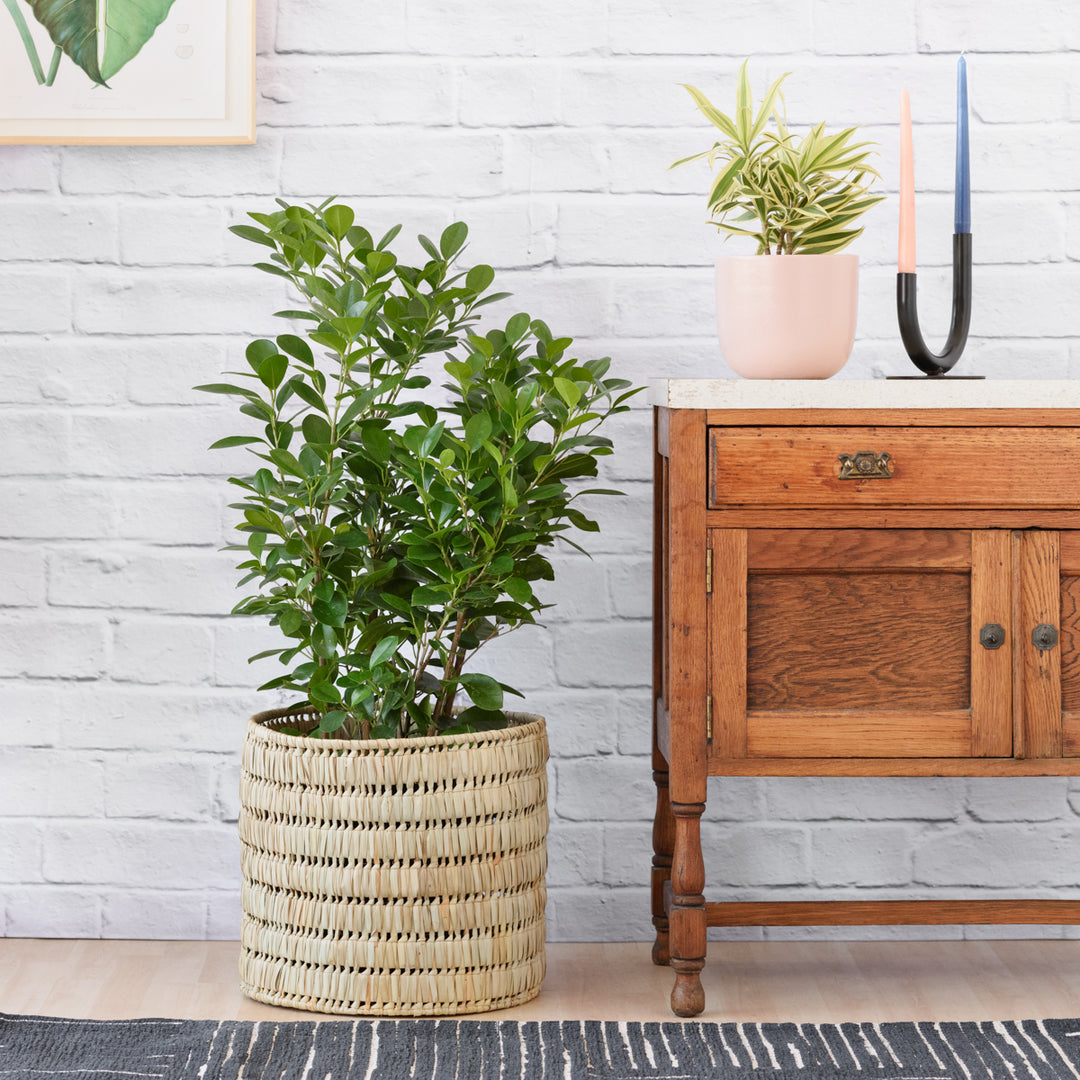
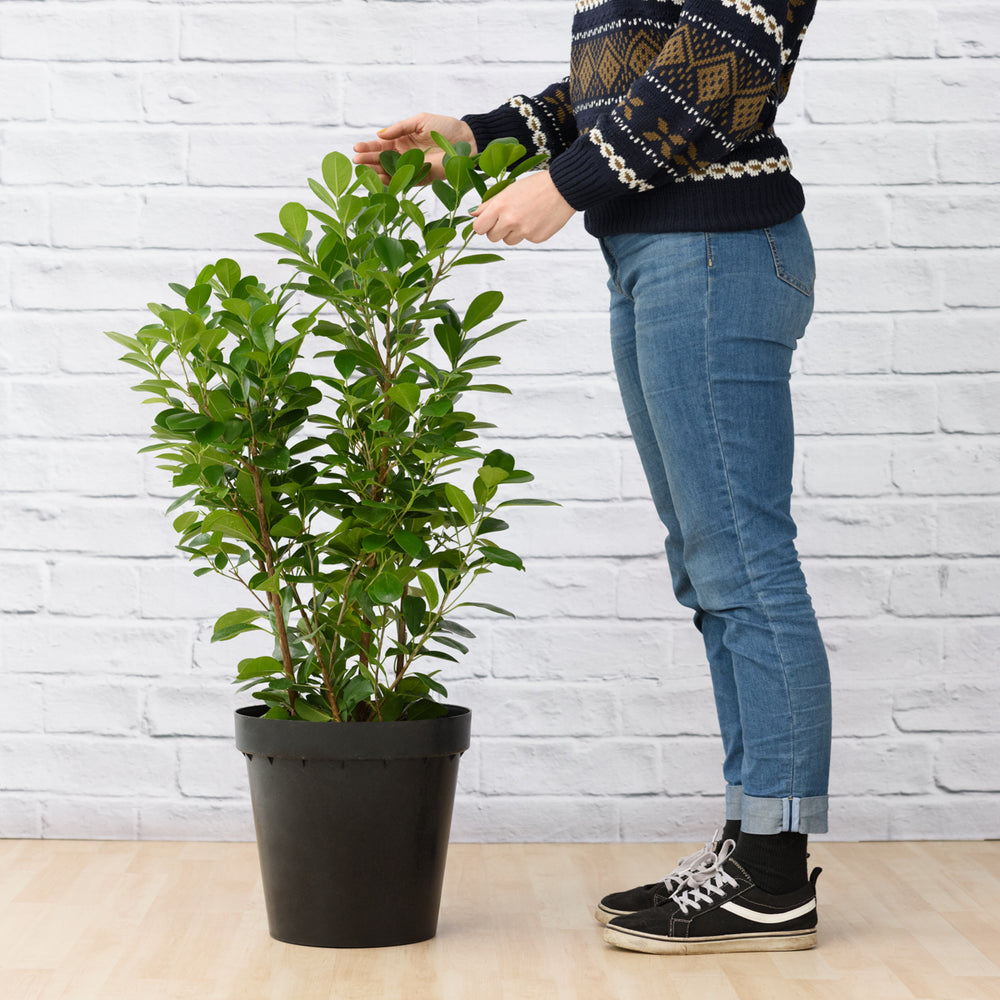
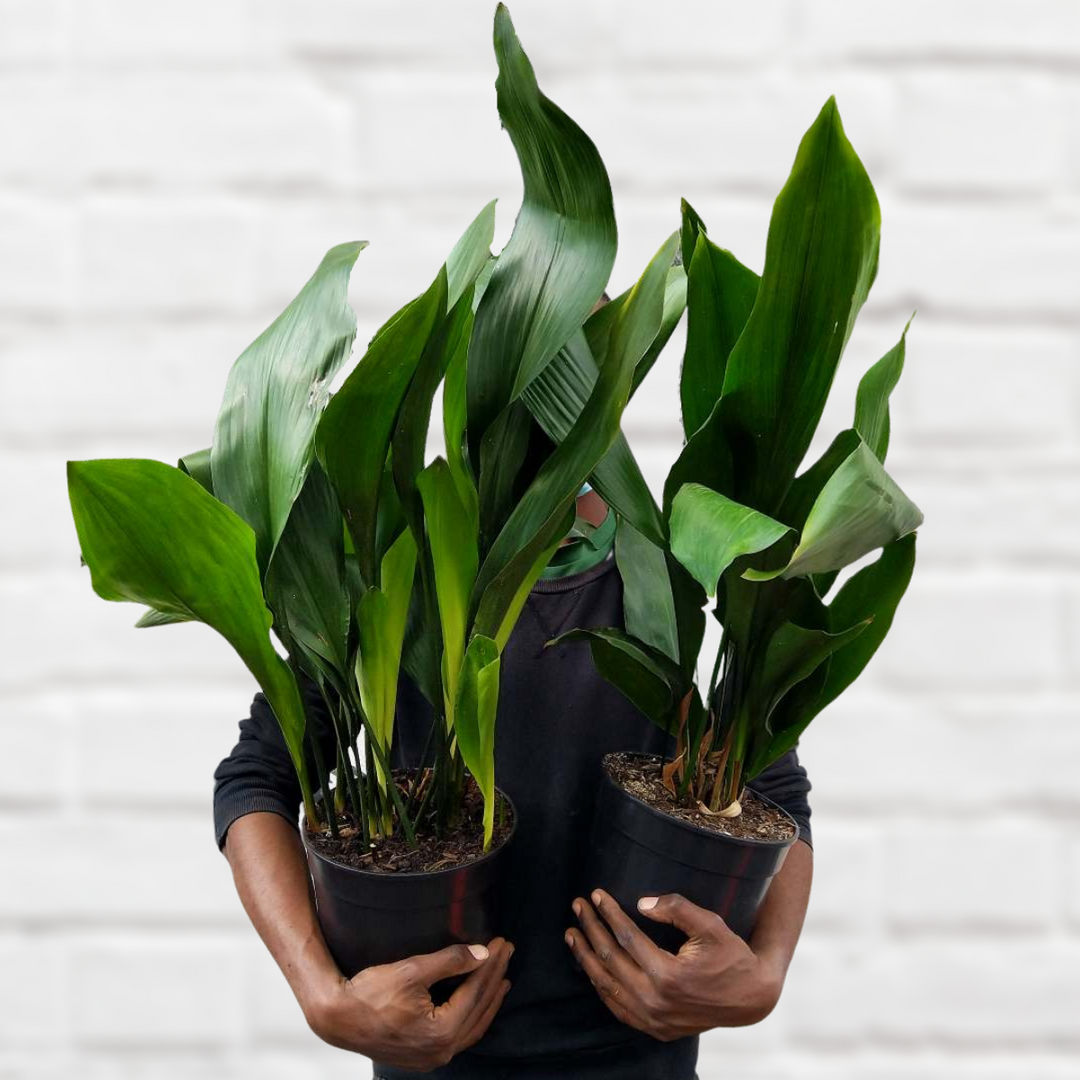
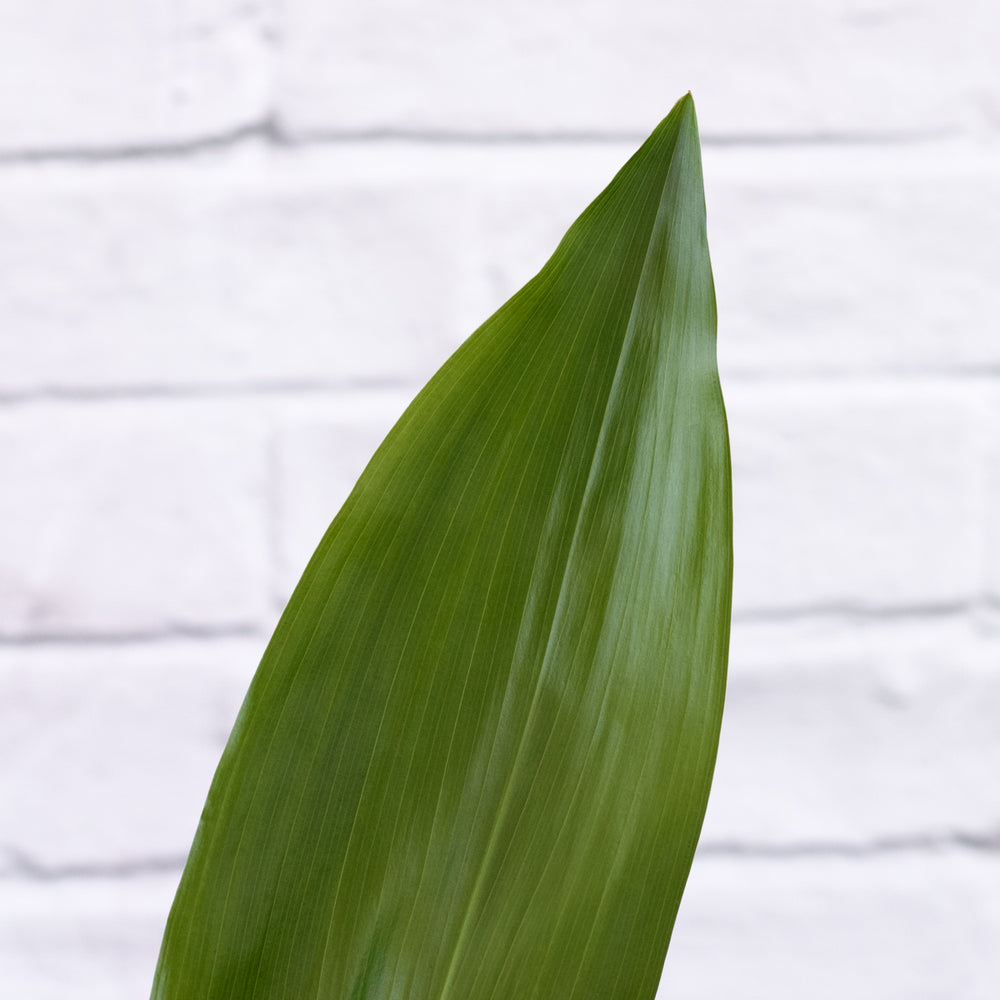
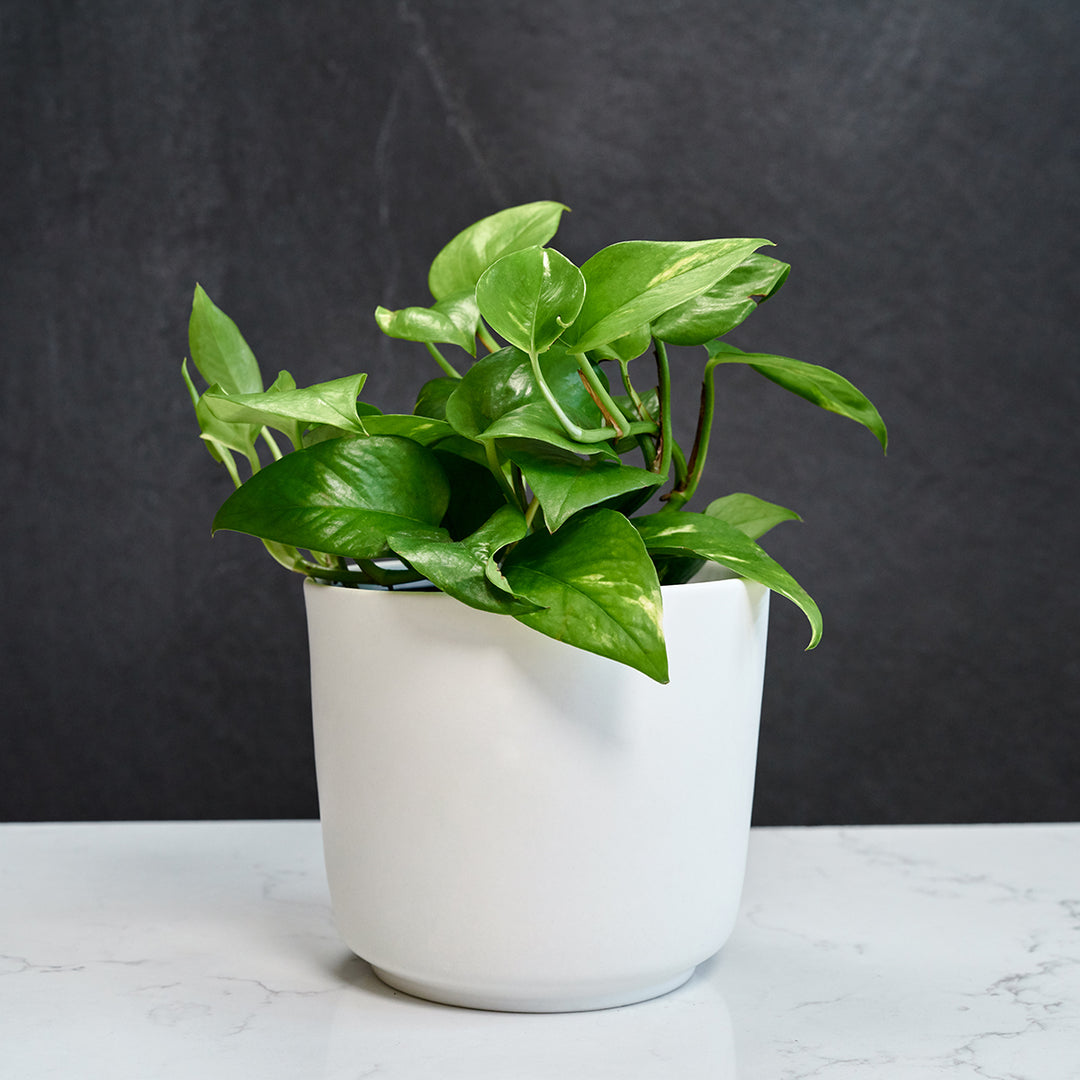
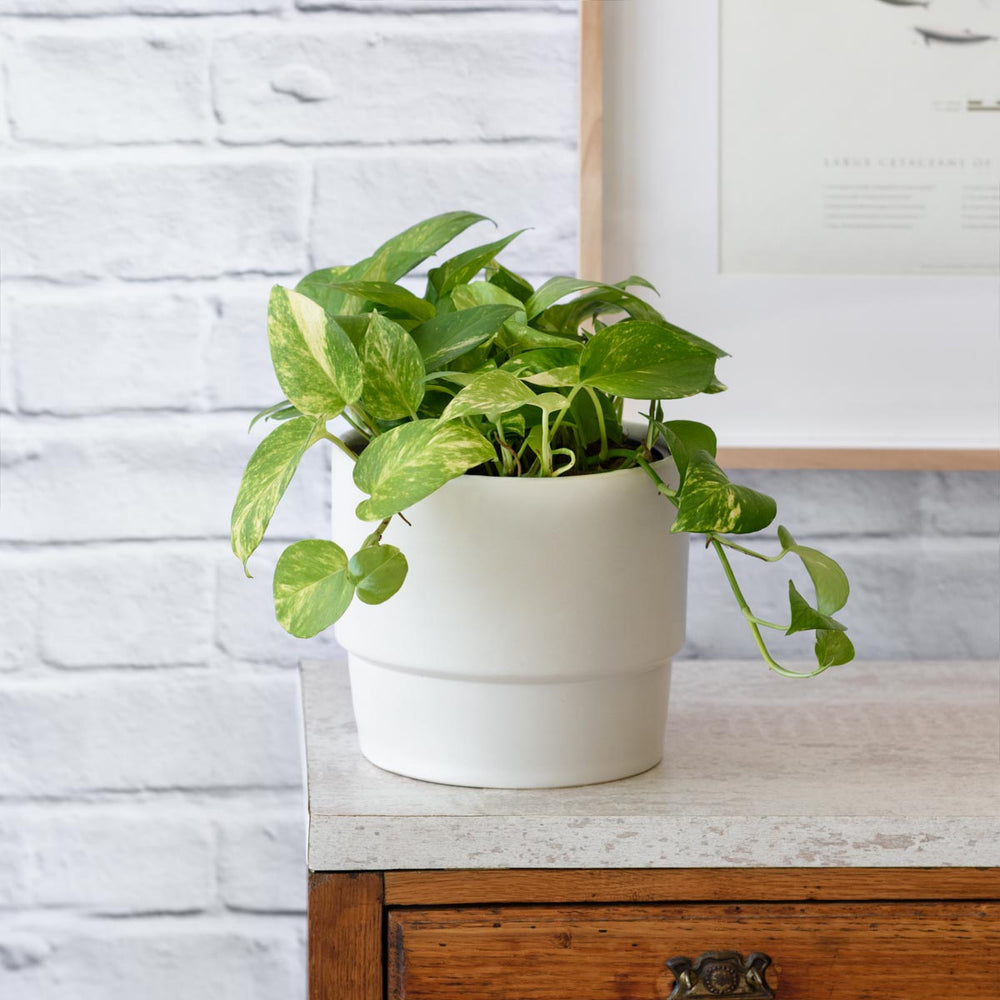
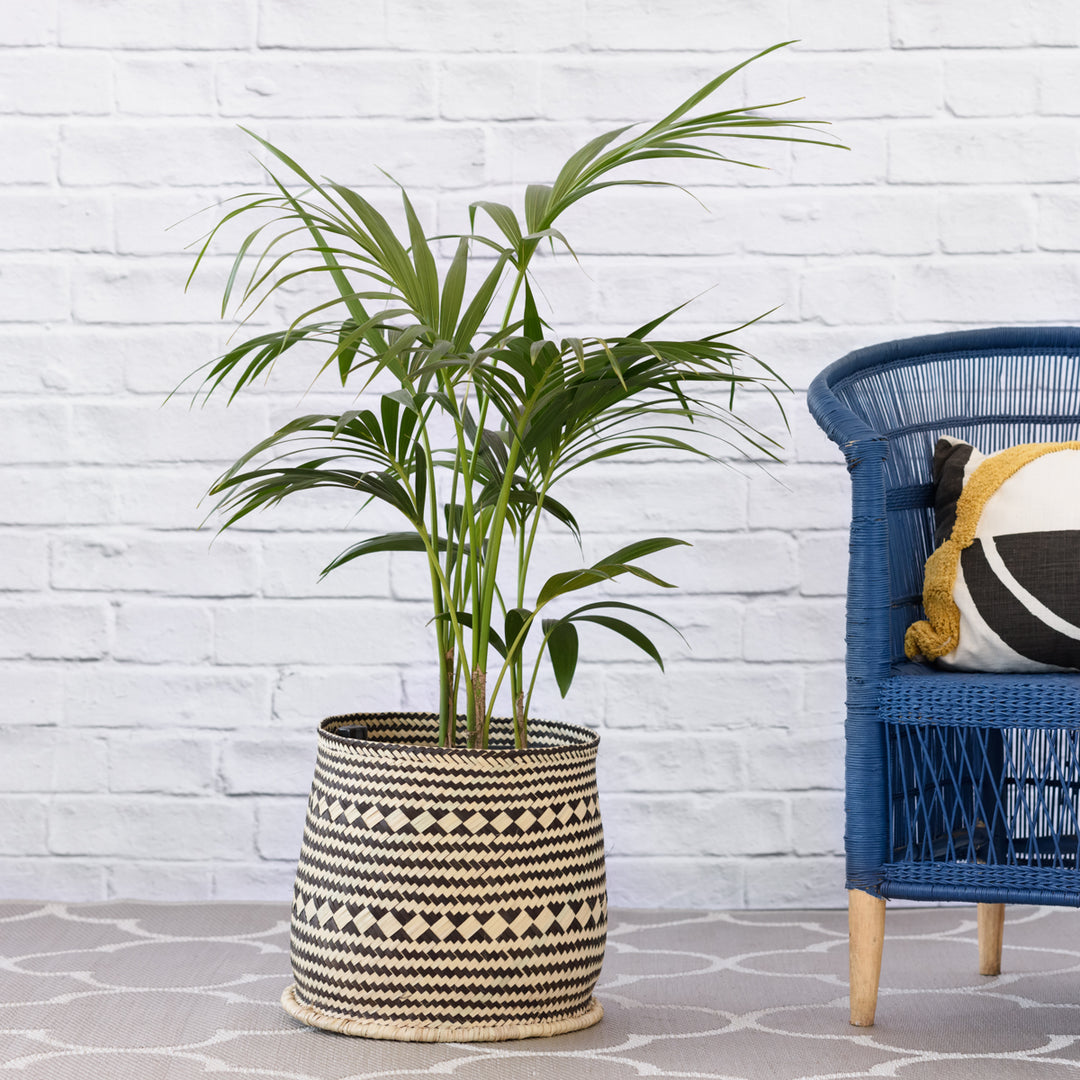
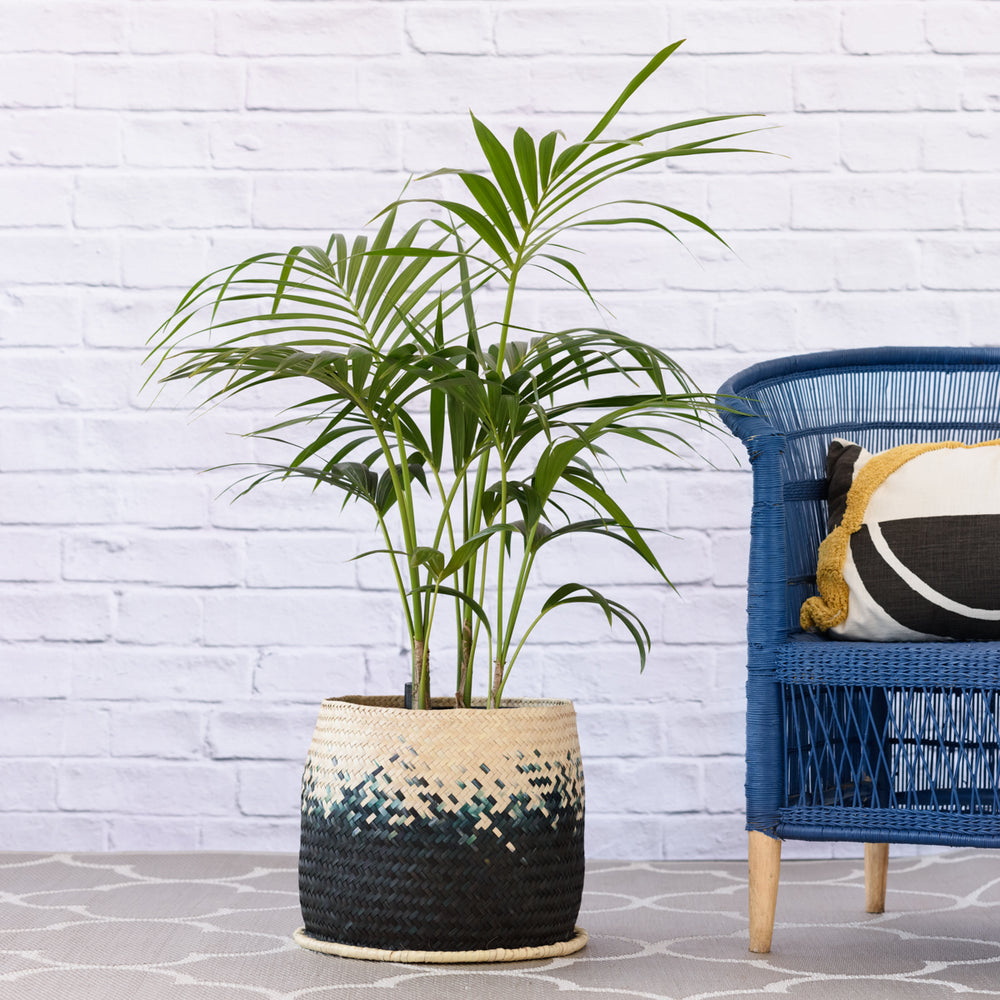
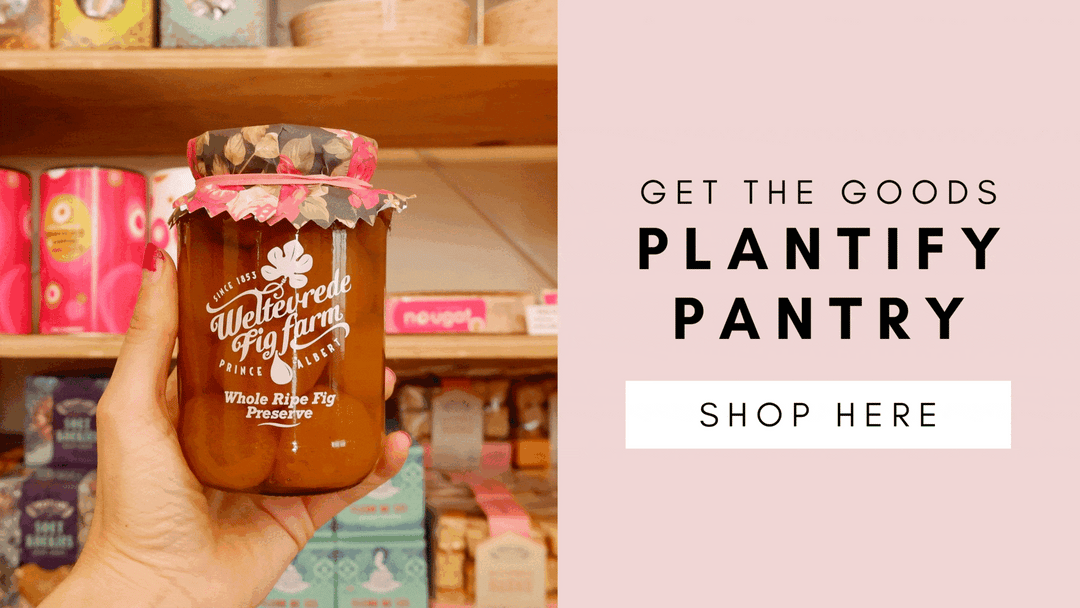
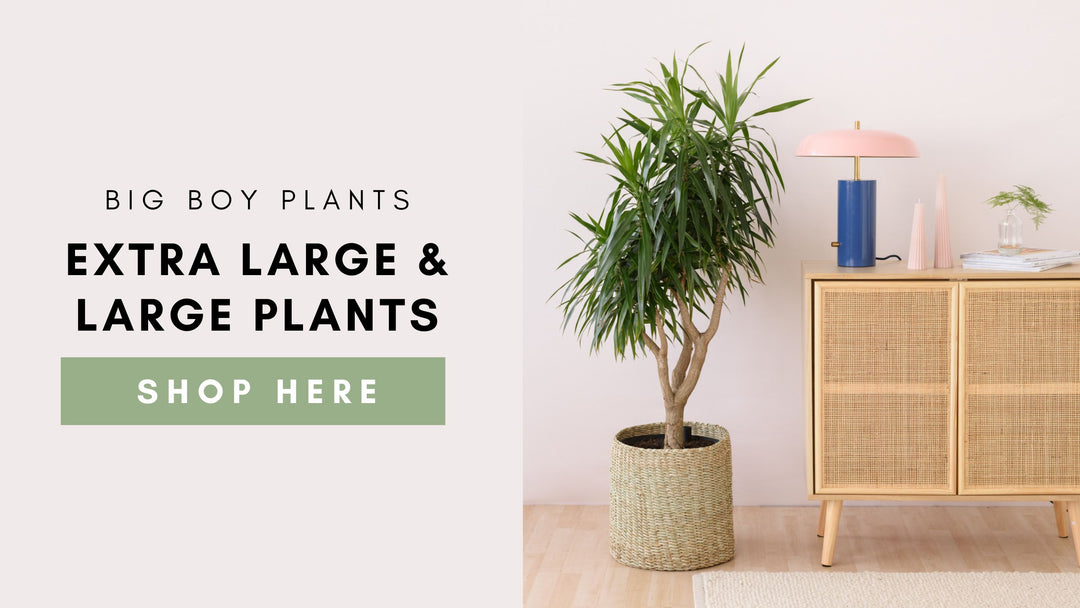
Leave a comment